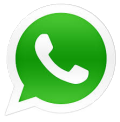Innovative 21st Century Learning Through PAKEM Learning Management
Abstract
Keywords
Full Text:
PDFReferences
Anam, Nurul dan Villatus Sholikhah, (2016). The Formulation of Laduni Quotient (LQ) Teaching and Learning Theory in Shaping Ulul Albab and Pancasilais Generation, Buku Proceding International Conference on Education and Training (ICET) Faculty of Education State University of Malang, 4-6 Nopember 2016.
Ananiadou, K., & Claro, M. (2009). 21st century skills and competences for new millennium learners in OECD countries. OECD Education Working Papers, No. 41. Paris: OECD Publishing. Retrieved from: http://dx.doi.org/10.1787/218525261154.
Andriani, D. E. (2010). Mengembangkan profesionalitas guru abad 21 melalui program pembimbingan yang efektif. Jurnal Manajemen Pendidikan, 6(2), 78- 92.
Andriani, D. E. (2014). E-Learning Berbasis Moodle: Konsep dan Praktek, Jember: STAIQOD Press.
Andriani, D. E. (2014). Konsep Belajar dan Pembelajaran Humanistik Perspektif Paolo Freire dan KH. Abdul Wahid Hasyim, Jurnal Al-Fitrah Prodi PAI Jurusan Tarbiyah STAIN Jember, Vol. 9, No. 1 September 2014.
Arifin, Zaenal. (2013). Model PAIKEM (Pembelajaran, Aktif, Inovatif, Kreatif, dan Menyenangkan) pada materi fikih kelas XI MA Al-Qodiri Jember.
Asmani, Jamal Ma’mur. (2011). 7 Tips Aplikasi PAKEM.
Asy’ari, M., Ikhsan, M., & Muhali. (2019). The Effectiveness of Inquiry Learning Model in Improving Prospective Teachers’ Metacognition Knowledge and Metacognition Awareness. International Journal of Instruction, 12(2), 455- 470. https://doi.org/10.29333/iji.2019.12229a ATC21S.
Binkley, M., Erstad, O., Herman, J., Raizen, S., Ripley, M. & Rumble, M. (2010). Defining 21st Century skills. Draft white paper. Part of a report to the Learning and Technology World Forum 2010, London. Conference Board of Canada. (2000).
Darling, L. H. (2006). Constructing 21st century teacher education. Journal of Teacher Education, 57(1). 300-314.
Dede, C. (2010). Comparing frameworks for 21st century skills. In J. Bellanca & R. Brandt (Eds.), 21st century skills: Rethinking how students learn (pp. 51–76). Bloomington, IN: Solution Tree Press.
Didin Kurniadi & Imam Machali, (2016). Manajement Pendidikan, Jogjakarta: Ar-ruz Media. Maisah, 2013. Manajemen Pendidikan. Ciputat: Gaung Persada Press Group.
Drake, S.M. (2014). Designing across the curriculum for “sustainable wellbeing”: A 21st century approach. In F. Deer, Falkenberg, B. McMillan, & L. Sims (Eds.), Sustainable well-being: Concepts, issues, and educational practice (pp. 57–76).
Dumont, H., Istance, D., & Benavides, F. (Eds.). (2010). The nature of learning: Using research to inspire practice. Paris: Educational Research and Innovation, OECD Publishing. Retrieved from: http://dx.doi.org/10.1787/9789264086487-en.
Fathurrohman, Muhammad. (2016). Model-Model Pembelajaran Inovatif, Jogjakarta: Ar-ruzz Media.
Flavell, J. H. (1976). Metacognitive aspects of problem solving. In L. B. Resnick (Ed.), The nature of intelligence (231-236).
Fullan, M., & Langworthy, M. (2014). A rich seam: How new pedagogies find deep learning. London: Pearson.. (2015). Redesign the curriculum for a 21 st century learning. Center for Curriculum Redesign. Diperoleh dari: https://curriculumredesign.org/wp-content/uploads/CCR-FoundationalPaperUpdated-Jan2016.pdf. Diakses pada tanggal 19 Agustus 2019.
Griffin, P.E., McGaw, B., & Care, E. (Eds). (2012). Assessment and teaching of 21st century skills (ATC21S). Dordrecht: Springer.
Gunada, Z. (2017). Pengertian literasi TIK. Diperoleh dari: https://zakariagunada 22blog.wordpress.com/2017/05/02/pengertian-literasi tik. Diakses pada tanggal 20 Agustus 2019.
Hafid, A. (2015). Pembelajaran inovatif (menggali karakter/potensi siswa). Retrieved from: ttps://www.kompasiana.com/afdhilhafid/54f94d4ba33311f1068b4c3b/p embelajaran-inovatif-menggali-karakterpotensi-siswa. Diakses pada 15 Agustus 2019.
Hargreaves, A. & Fullan, M. (2000). Mentoring in the new millennium. ProQuest Education Journals, 39(1), 50-56.
Hillsdale, NJ: Erlbaum. Fullan, M. (2013). Great to excellent: Launching the next stage of Ontario’s education agenda. Toronto: Ontario Ministry of Education. Retrieved from: www.edu.gov.on.ca/eng/ document/reports/FullanReport_EN_07.pdf.
Kementerian Pendidikan dan Kebudayaan. (2014). Konsep dan implementasi kurikulum 2013. Jakarta: Kemendikbud. Diperoleh dari: https://www.kemdikbud.go.id/kemdikbud/dokumen/Paparan/Paparan%20Wa mendik.pdf. diakses pada tanggal 19 Agustus 2019.
Kluwe, R. H. (1982). Cobnitive Knowledge and executive control: Metacognition. Springer, 21(1), 201-224.
Lai, E. R. (2011). Metacognition: A literature review. Research Report (pp. 1-41). Pearson. Diperoleh dari http://www.pearsonassessments.com.
Levy, F., & Murnane, R.J. (2004). The new division of labor: How computers are creating the next job market. Princeton, NJ: Princeton University Press.
Masril. (2014). Pengembangan profesionalisme guru di abad XXI. Diperoleh dari: http://fisika.fmipa.unp.ac.id/wp-content/uploads/2014/12/file18.pdf. Diakses tanggal 20 Agustus 2019.
Mayasari. (2015). Manajemen Pembelajaran Homeschooling 433 . Jurnal, Manajemen Pendidikan Volume 24, Nomor 5, Maret 2015: 432-438.
Muhali. (2017). Conceptual framework of reflective-metacogtitive learning model to improve students’ metacognition ability at senior hight school. Proceeding of Mathematic, Informatic, Science, and Education International Conference. 10 September 2017. Surabaya: Universitas Negeri Surabaya. Indonesia.
Muhali. (2018). Arah pengembangan pendidikan masa kini menurut perspektif revolusi industry 4.0. Seminar Nasional membangun pendidikan mandiri dan berkualitas pada era revolusi industri 4.0. 29 September 2019. Mataram: LPP Mandala. Indonesia.
Muhali. (2018). Pengembangan model pembelajaran reflektif-metakognitif untuk meningkatkan kemampuan metakognisi siswa SMA. Disertasi. Universitas Negeri Surabaya.
Mukhadis, A. (2013). Sosok Manusia Indonesia Unggul dan Berkarakter dalam Bidang Teknologi Sebagai Tuntutan Hidup di Era Globalisasi.
Mulford, B. (2008). The leadership challenge: Improving learning in schools. Australian Education Review. Victoria: ACER Press.
Mulyasa, 2006. Kurikulum Berbasis Kompetensi. Bandung: PT Remaja Rosdakarya.
Peraturan Menteri Pendidikan Dan Kebudayaan Republik Indonesia Nomor 103 Tahun 2014, Tentang Pembelajaran Pada Pendidikan Dasar Dan Pendidikan Menengah,.
Pidarta, Made. (2004). Manajemen Pendidikan Indonesia. Jakarta: PT Rineka Cipta.
Rusman. (2010). Model-Model Pembelajaran Mengembangkan Profesionalisme Pendidik. Jakarta:PT RajaGrafindo Persada.
Sabudu D. (2019). Can Joyful Learning Strategy Using Humor Increase Students’learning Outcomes In English Language Learning.
Sarwan, (2013). Belajar Dan Pembelajaran Aktualisasi Kosep Fundamental Dalam Proses Pendidikan . Jember:STAIN jember press.
Suprihatiningrum, Jamil. (2016). Strategi Pembelajaran. Jogjakarta:Ar-ruzz Media.
Winnipeg, MB, (2014). Education for Sustainable Well-Being (ESWB) Press. Retrieved from: www.eswbpress.org/uploads/1/2/8/9/12899389/sustainable_well- being_2014.pdf#page=65.
Zazin, Nur. (2011). Gerakan Menata Mutu Pendidikan Teori Dan Aplikasi. Jogjakarta: Ar-Ruz media. Employability skills 2000+. Retrieved from: www.conferenceboard.ca/topics/education/learning-tools/employabilityskills.aspx.
C21 Canada (Canadians for 21st Century Learning and Innovation). (2012). Shifting minds: A 21st century vision of public education for Canada. Retrieved from: www.c21canada.org/wp-content/uploads/2012/11/Shifting-Minds Revised.pdf.
DOI: http://dx.doi.org/10.29240/jsmp.v7i1.6966
Refbacks
- There are currently no refbacks.
Copyright (c) 2023 Debie Kalalo, Deitje Katuuk, Jeffry Lengkong, Victory Nicodemus Joufree Rotty

This work is licensed under a Creative Commons Attribution-NonCommercial-ShareAlike 4.0 International License.
INDEXED BY:
 This work is licensed under a Creative Commons Attribution-NonCommercial-ShareAlike 4.0 International License
This work is licensed under a Creative Commons Attribution-NonCommercial-ShareAlike 4.0 International License

















